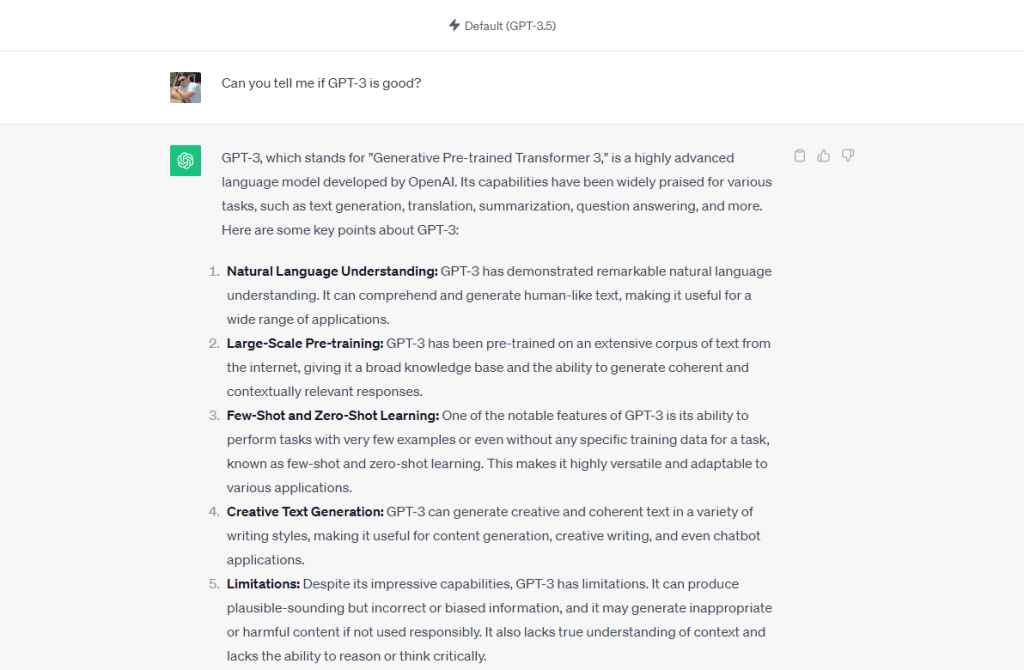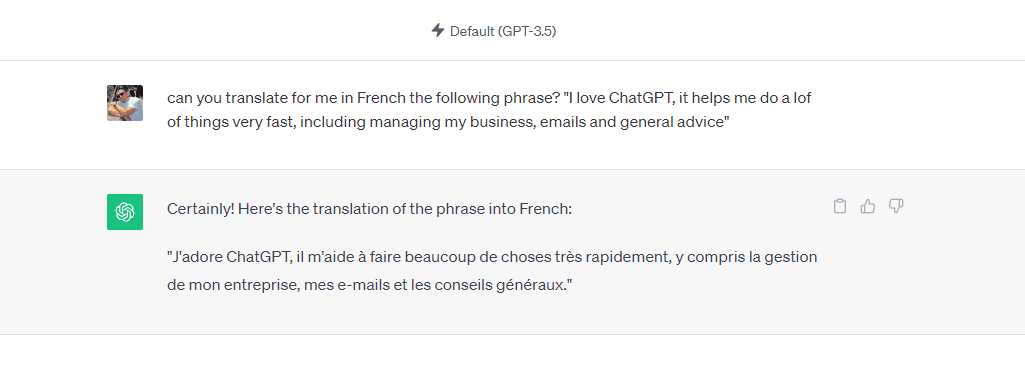- GPT-3 is a language model OpenAI makes that can write just like a human.
- This AI tool uses machine learning and neural networks to predict what word comes next in a sentence.
- It helps make content, translate languages, and help voice assistants communicate better.
- Still, it has some downsides, like being not very good at learning from new info or remembering things over time.
What Is GPT-3?
We’re entering the world of GPT-3, an advanced language prediction model. This neural network-based marvel is a product of machine learning and artificial intelligence research.
As we explore further, we’ll break down complex concepts like transformer architecture and decoder-only models to help you understand why GPT-3 is a significant stride forward in natural language processing.
This guide will reveal how themes, emotions, and sentiment all play critical roles in making GPT-3’s output indistinguishable from the human-written text.
GPT-3, standing for Generative Pretrained Transformer 3, is a monumental advanced development by OpenAI. It functions as a language model and uses its colossal neural network of 175 billion parameters to churn out incredibly human-like text.
This decoder-only model leverages deep learning techniques to predict an incoming series of words based on the user’s past input. The innovation shows how improvements in language models scale hand-in-hand with advancements in computational resources, dataset size, and overall model dimensions.
Beyond being just a text generator tool, GPT-3 opens up avenues for natural language processing tasks in various applications due to its predictive capability.
Language prediction model
GPT-3 serves as a top-tier language prediction model in the field of natural language processing. It uses neural networks and machine learning to operate effectively, predicting what word will likely follow in a sentence based on context.
This contextual prediction helps GPT-3 to generate text that rivals human-written content.
The sophistication behind this fascinating tool stems from its integration of deep learning. Coupled with its transformer architecture, this technology gives the model an unparalleled ability to swiftly process and understand large amounts of data.
As it analyzes text input, GPT-3 cleverly identifies patterns, understands sentiments, and creates outputs reminiscent of authentic human expression.

Neural network-based
GPT-3’s power lies in its neural network design. This intricate structure is essentially an artificial version of the human brain’s interconnected network optimized for machine learning and pattern recognition.
The model boasts a staggering 175 billion parameters, making it one of the largest deep learning models. Each parameter contributes to GPT-3’s ability to predict language patterns and generate natural-sounding text.
To train this colossal framework, OpenAI employed a method known as next-word prediction. This process replicates how humans might guess which words follow a phrase or sentence in conversation or writing.
With advancements like these, GPT-3 is revolutionizing our understanding and interpretation of language itself.
Capabilities of GPT-3
GPT-3 is designed to excel in a range of tasks. It can generate human-like text, making it useful for content creation and language translation. Its advanced capabilities allow it to analyze sentiment effectively.
GPT-3’s ability to understand and generate natural language text has revolutionized the capacities of voice assistants and chatbots, improving their conversational abilities significantly.
This machine learning marvel helps us in countless ways, constantly expanding its use cases as it continually learns and evolves with new information.
Generating human-like text
GPT-3 can generate human-like text. Using deep learning and neural networks, it crafts sentences that closely resemble those written by a human.
Its performance in producing high-quality text comes from autoregressive language modeling and natural language generation techniques embedded within its architecture. This AI system only needs minimal input data to create comprehensive, coherent content.
Such accuracy gives GPT-3 an upper hand in passing the Turing test – often used as a benchmark for machine-created text indistinguishable from human writing. Not just confined to English, but GPT-3 excels at generating text in various languages; this vast capacity expands its use cases exponentially!
Assisting with content creation
GPT-3 is transforming the way we create content. Its ability to generate human-like text is valuable for creative writing and copywriting support. Companies across various industries are leveraging GPT-3’s capabilities to automate tasks that traditionally require human creativity and effort.
Not only can GPT-3 draft emails or blog articles, but it also excels in generating unique ideas for content creation. Businesses use this cutting-edge technology for programming assistance, creating engaging content assets, and crafting compelling social media posts.
Beyond writing assistance, GPT-3 expands its utility into language translation, helping us communicate with international audiences more efficiently. The power of GPT-3 lies in its capacity to revolutionize our approach towards creating and utilizing content.
Language translation and analysis
With GPT-3, we can dive into the vast and intricate language translation and analysis world. It excels in translating languages while maintaining context; a task often considered challenging even for fluent bilinguals.

Whether English to Spanish or Arabic to Chinese, GPT-3 handles text translation smoothly, behaving like a native speaker. Not only that, it proves to be an excellent tool for linguistic analysis as well! Its capabilities are groundbreaking, from sentiment analysis in customer reviews to understanding complex legal documents’ language processing.
With GPT-3 at our disposal, language comprehension barriers are rapidly disappearing.
Voice assistants and chatbots
Voice assistants and chatbots receive a significant boost with the integration of GPT-3. This advanced language model excels at generating human-like text, making these platforms significantly more intuitive and interactive.
Imagine asking your home assistant complex questions and receiving detailed, accurate responses in seconds! As for chatbots, GPT-3 takes them beyond simple query responses to conducting in-depth conversations almost indistinguishable from a human agent.
Furthermore, coupling GPT-3 with speech recognition enhances its capacity to process verbal prompts effectively and efficiently. With such capabilities, we’re witnessing transformative changes across numerous industries that rely on sophisticated natural language processing abilities.
How Does GPT-3 Work?
In simple terms, GPT-3 works through an encoder-decoder architecture utilizing machine learning. It receives input text and transforms it via a process known as ‘decoding’. It’s like training the model to predict what comes next in a sentence.
This powerful generative pre trained transformer architecture utilizes natural language to analyze themes, emotions, and sentiment in the text.
Encoder-decoder architecture
GPT-3 utilizes an encoder-decoder architecture, one of the three basic infrastructures used in Natural Language Processing (NLP). This setup serves multiple purposes, like information retrieval, generating news articles, and answering questions precisely.
The key elements of this structure are the encoder and decoder, which work together in harmony. As our input text moves into GPT-3’s system, the encoder swiftly processes it, creating a unique representation.
Following that, it’s over to the decoder, which generates an appropriate response or output based on this encoded illustration. Thus making this architectural design highly efficient for varied applications across industries.
Training process
Let’s dive into the training process of GPT-3, an impressive feat in machine learning and natural language processing.
- The model starts with a data-driven approach, ingesting over 1 billion words from diverse sources.
- This vast corpus of text forms the foundation for its language model.
- It then undergoes intensive training using a technique known as transfer learning.
- During this phase, the neural network learns to predict upcoming words based on context.
- The generative modeling ability of GPT-3 then allows it to produce human-like responses.
- Contrary to traditional methods, GPT-3 does not follow explicit rules or instructions during this phase.
- Instead, it relies heavily on the data provided during training.
Limitations of GPT-3
GPT-3 exhibits inefficiency during its pre-training phase due to poor sample efficiency. Its transformer architecture restricts the input size, making it challenging to process large inputs effectively.
When it comes to learning and memory retention, GPT-3 falls short. It cannot continuously learn from new information or maintain a long-term memory. Moreover, biases towards gender, race, and religion present another significant limitation.
These biased outputs can pose ethical issues and lead to user dissatisfaction.
In terms of chatbot functionality, natural language processing limitations become evident in multiple situations, such as uncertainty in input processing or generating inappropriate responses.
The lack of fine-tuning capabilities further compounds these shortcomings by limiting the potential for improvement over time. These are some critical obstacles that users might encounter while implementing GPT-3 technology.
Conclusion
GPT-3 is indeed revolutionizing how we perceive artificial intelligence and machine learning. Its ability to predict text and generate human-like language broadens its application in countless sectors.
Despite having certain limitations, the massive potential of GPT-3 paints an exciting picture for the future. Unsurprisingly, this innovation from OpenAI is shaping a new era in AI technology.





